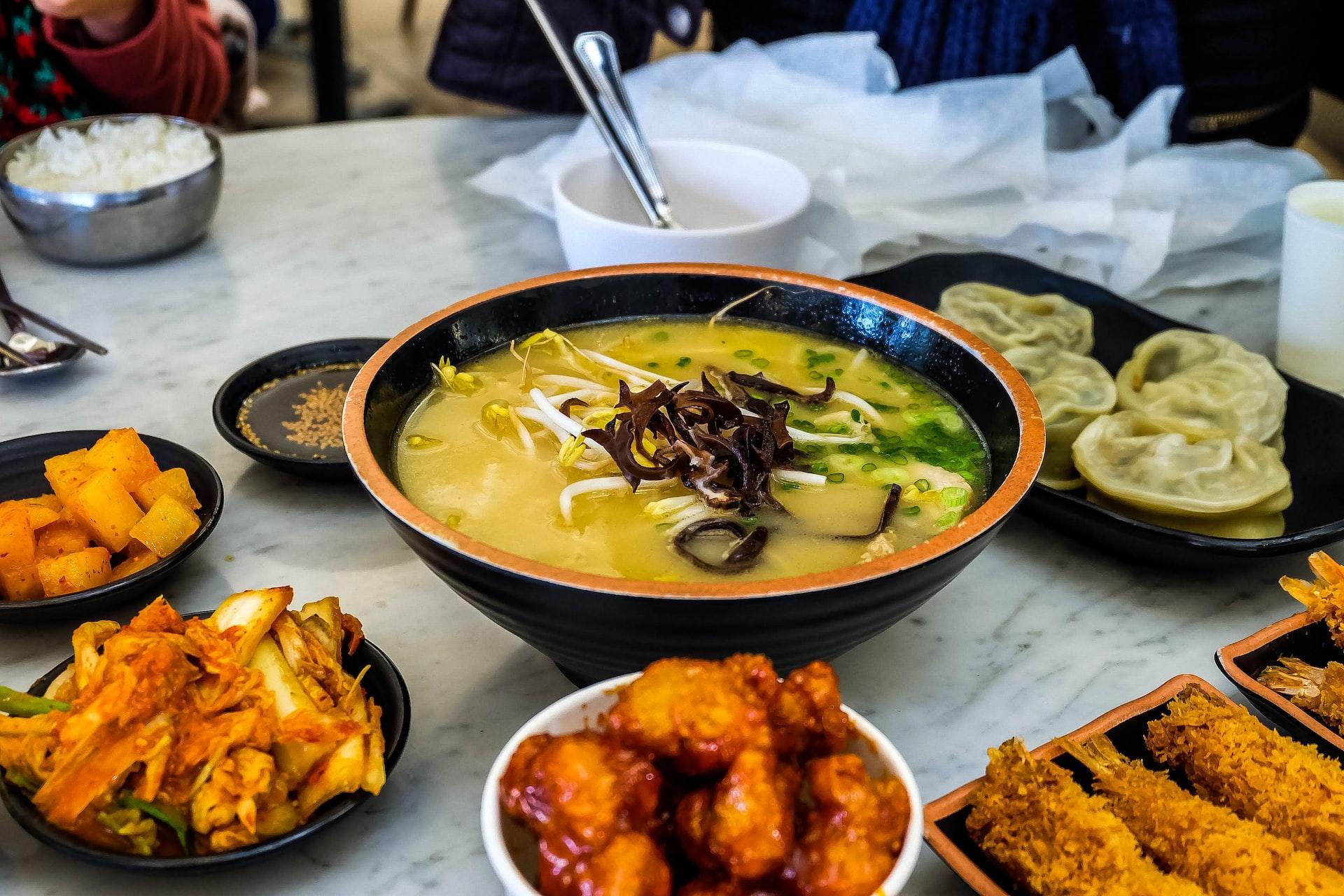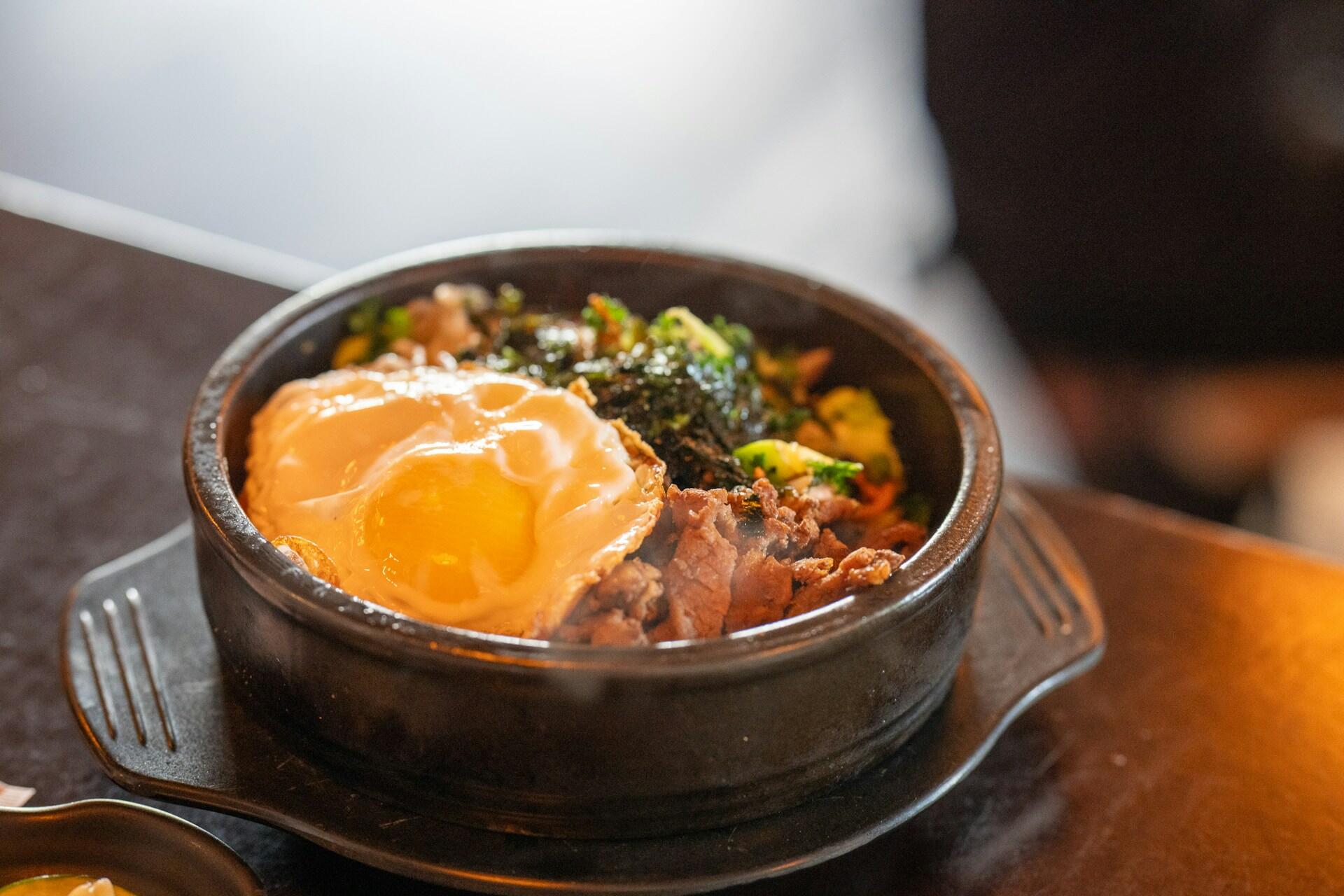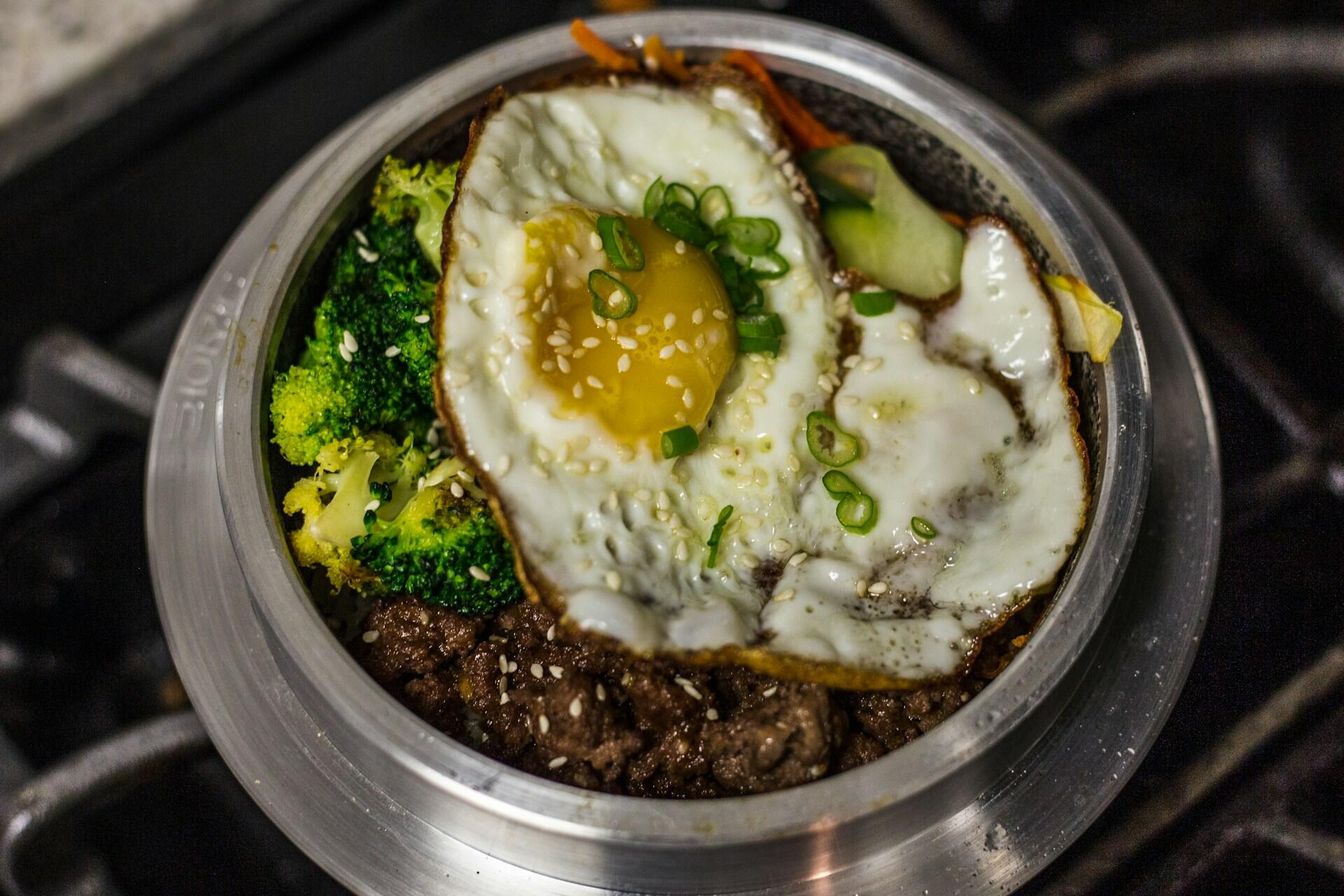If you had to name a traditional food in whichever part of Canada you live, what would it be? Poutine, tourtière or butter tarts? Around the world, Canada is renowned for its comfort food: maple syrup, Nanaimo bars, and the favorite poutine, and all the culinary controversies that make us uniquely Canadian. But would you like to discover a little more about popular Korean food? Here's a glimpse of what's to come!
🍯 Sweet Korean Street Foods
| Dish | Type / Category | Key Ingredients | Flavor Profile | Best Season | Fun Fact |
|---|---|---|---|---|---|
| Hotteok | Sweet pancake | Wheat flour, brown sugar, cinnamon, nuts | Sweet, nutty, and gooey | Winter | Crispy outside, soft inside — Korea’s ultimate winter comfort food. |
| Bungeoppang | Pastry / dessert | Wheat flour, red bean paste, sugar | Sweet & toasty | Winter | Fish-shaped pastry that symbolizes good fortune. |
| Gyeranppang | Egg bread | Batter, egg, butter, sugar | Sweet & savory | Winter | Sold piping hot in winter markets — breakfast on the go. |
| Tornado Potato (Sweet versions) | Fried snack | Spiral-cut potato, honey butter or sugar seasoning | Sweet & crispy | All year | Sweet versions are popular among kids and tourists. |
| Hotbar (sweet chili option) | Fried fish cake | Ground fish, flour, sweet chili glaze | Sweet & spicy | Winter | Some vendors coat it in sweet chili sauce for a dessert-like twist. |
🍜 Salty Korean Street Foods
| Dish | Type / Category | Key Ingredients | Flavor Profile | Spiciness (1-3) | Best Season | Fun Fact |
|---|---|---|---|---|---|---|
| Tteokbokki | Rice cake snack | Rice cakes, gochujang, fish cake, egg | Sweet & spicy | 2 | Winter | Korea’s #1 comfort snack, often eaten with fish cake skewers. |
| Kimbap | Rice roll | Rice, seaweed, meat/fish, veggies | Savory & mild | 0 | All year | Korea’s answer to sushi — portable and family-friendly. |
| Eomuk | Fish cake skewer | Ground white fish, flour, broth | Umami & mild | 0 | Winter | Originated in Busan — often served in hot soup. |
| Dakgangjeong | Fried chicken | Chicken, soy sauce, garlic, gochujang | Sweet, spicy & crispy | 1 | All year | Korea’s version of KFC, double-fried for crunch. |
| Mandu | Dumplings | Pork/beef, tofu, veggies, noodles | Savory & hearty | 0 | All year | Commonly eaten during Lunar New Year for luck. |
| Sundae | Blood sausage | Pig intestines, glass noodles, rice | Mild & earthy | 1 | All year | Best enjoyed with tteokbokki sauce or chili flakes. |
| Jjajangmyeon | Noodle dish | Noodles, black bean sauce, pork, veggies | Savory & rich | 0 | All year | Often featured in K-dramas as delivery food. |
| Seolleongtang | Soup | Ox bones, garlic, scallions, noodles | Mild & nourishing | 0 | Winter | Served plain so diners can season to taste. |
| Kimchi | Side dish | Cabbage, chili, garlic, ginger | Tangy & spicy | 2 | All year | Korea’s most iconic fermented food. |
No other country could claim fries as a cultural symbol. Likewise, foods eaten across the South Korean peninsula are integral to Korean culture. As the West becomes ever more fascinated by all things Korean - music, films, and dramas - sampling Korean street food is the next exciting aspect of Korean culture you must explore. Here we go; do you have your chopsticks and spoon ready?
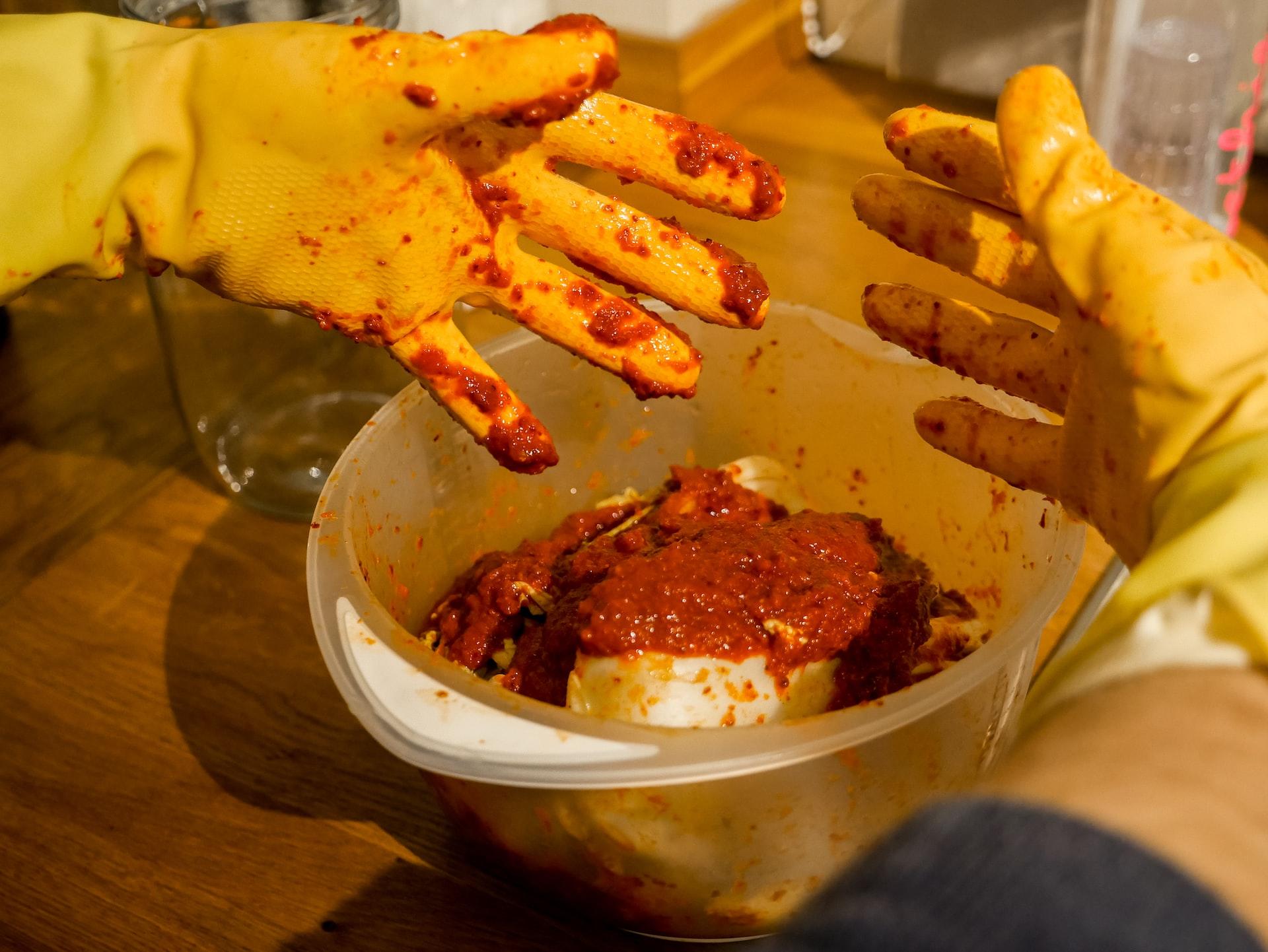

The Essence of Korean Street Food
The traditional Korean diet revolves around rice. vegetables, fish, and umami flavors. A craving for meat seems to have become a trope in Korean films and dramas. Sometimes, even pork belly wraps called bossam come very nearly to a starring role. Classic Korean cuisine captures the nation's social spirit and creativity. 1
Emerging in the post-war period, affordable and comforting Korean culinary options are always available for working-class communities and fast-paced lifestyles. Everything from tteokbokki (spicy rice cakes) to eomuk (fish cakes) has evolved into a cherished part of the country's urban identity. Explore the best Korean food dishes below.
Must-Try Korean Street Foods
Like fashion tastes, preferred music styles, and even Korean favourite songs, what's popular for some might be reviled by others. We'll be as objective as possible with this segment of the popular Korean food list. Be sure to let us know if we mentioned your favs. And in the comments section, feel free to add the dishes we left out.
Now, if you had to choose just five Korean dishes that are truly unmissable, here are our top five!
🔥 Tteokbokki (Spicy Rice Cakes)
🥞 Hotteok (Sweet Pancakes)
🍗 Dakgangjeong (Sweet Crispy Fried Chicken)
🐟 Bungeoppang (Fish-shaped Pastry)
🍙 Kimbap (Seaweed Rice Rolls)
Tteokbokki (Spicy Rice Cakes)
With all the talk about chili paste and spiciness, you might have guessed that South Koreans like their food on the fiery side. If you do too, then you must try tteokbokki. It's longish, chewy rice cakes simmered in a chili paste called gochujang, which gives this dish a sweet-and-savory taste and makes it one of the best Korean foods, ideal for the cold winters in Korea. 2
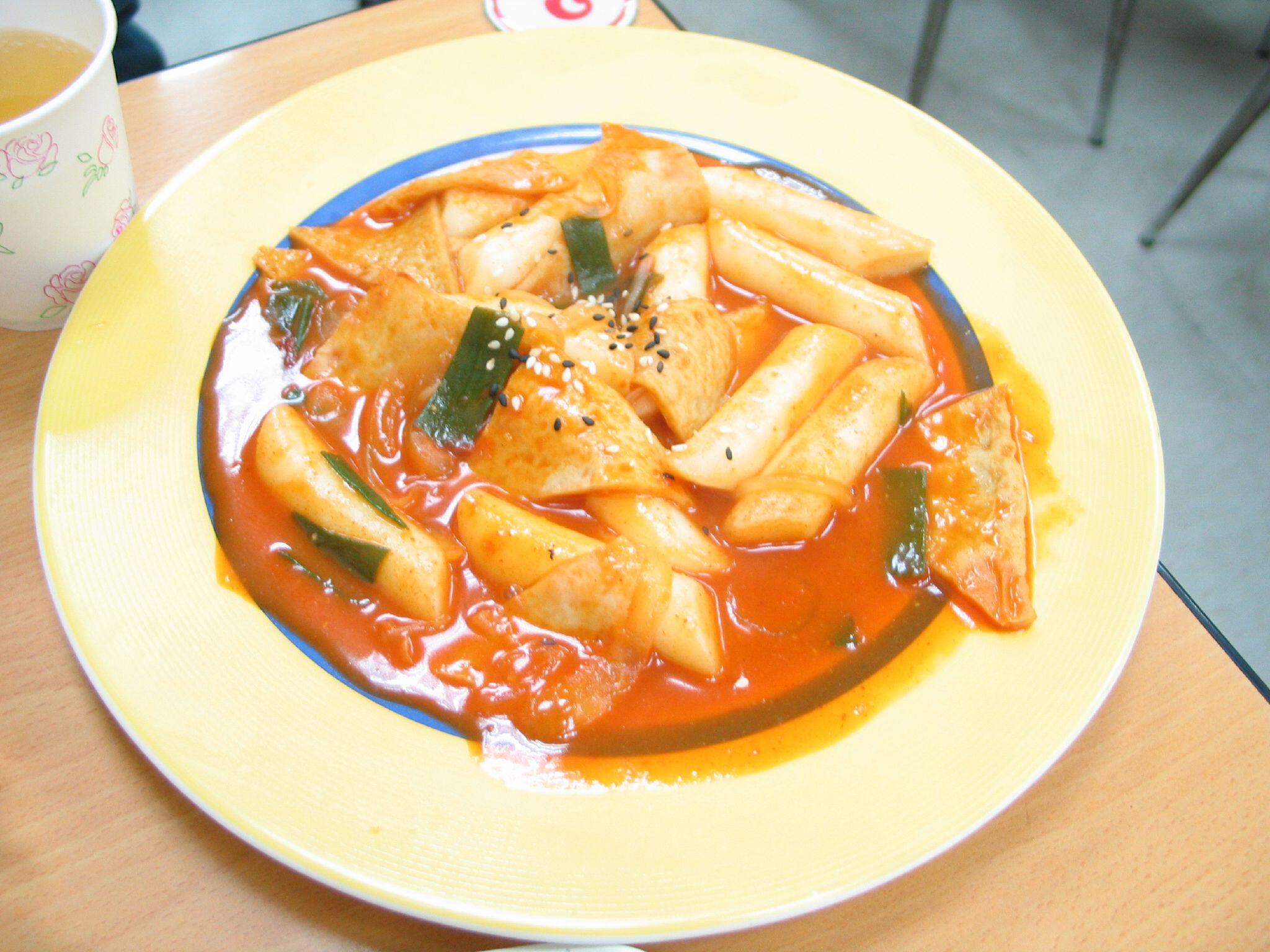
If you'd rather have the non-spicy version, you should order gungjun-tteokbokki. It is simmered in a soy sauce blend, characterized by its umami flavor. Boiled eggs, scallions and fish cakes are common tteokbokki ingredients, turning a simple dish into one of the most comforting foods.
The trick to truly enjoying that dish is eating it hot. When it cools down, the texture tends to get way more sticky, and it won't mix well.
Hotteok (Sweet Pancakes)
If you are ready for something sweet, the hotteok is definitely a must-try. These pan fried pancakes are made with a mix of sugar, cinnamon and nuts, which create a crispy threat on the outside, and a soft delicacy on the inside. Another sweet snack, perfect for wintertime, and one of Korea's most beloved street desserts. 3
If you've just figured out your age according to the Korean ageing system, you might treat yourself the local way with a comforting bowl of sweet-and-savory tteokbokki.
Kimbap (Seaweed Rice Rolls)
If you like sushi, you'll love this glutinous rice roll. You may want your kimbap stuffed with meat, fish, egg, and colorful vegetables, such as spinach, pickled radish, and carrots, with steamed rice seasoned with sesame oil, all wrapped in a sheet of seaweed.
Unlike the famous sushi, kimbap is the go-to meal for lunches, late-night dinners, or quick street snacks. And if you’re in Seoul, you should not miss this beloved triangle kimbap, a modern convenience-store favourite that comes pre-wrapped and ready to eat on the go. 4
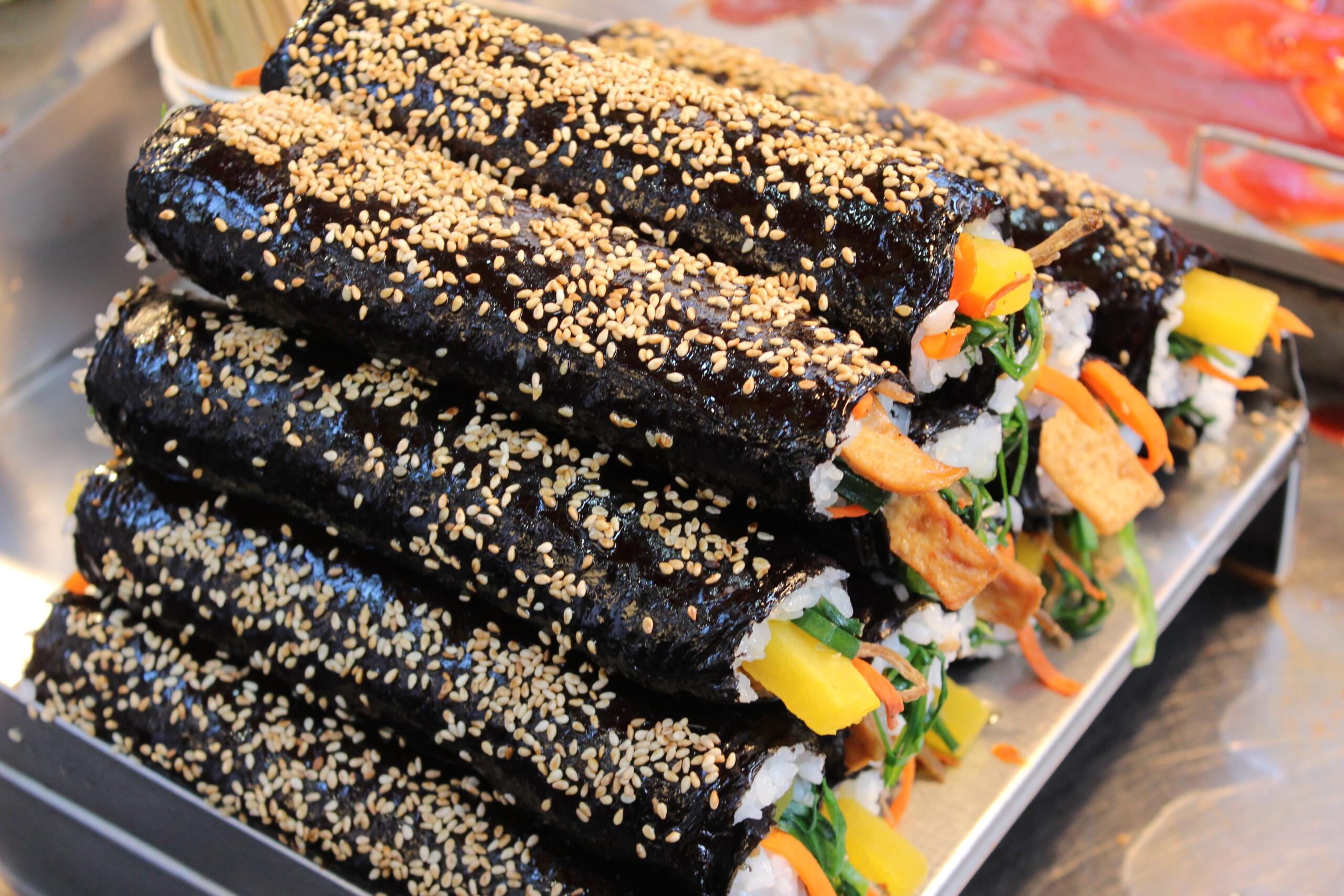
Eomuk (Fish Cake Skewers)
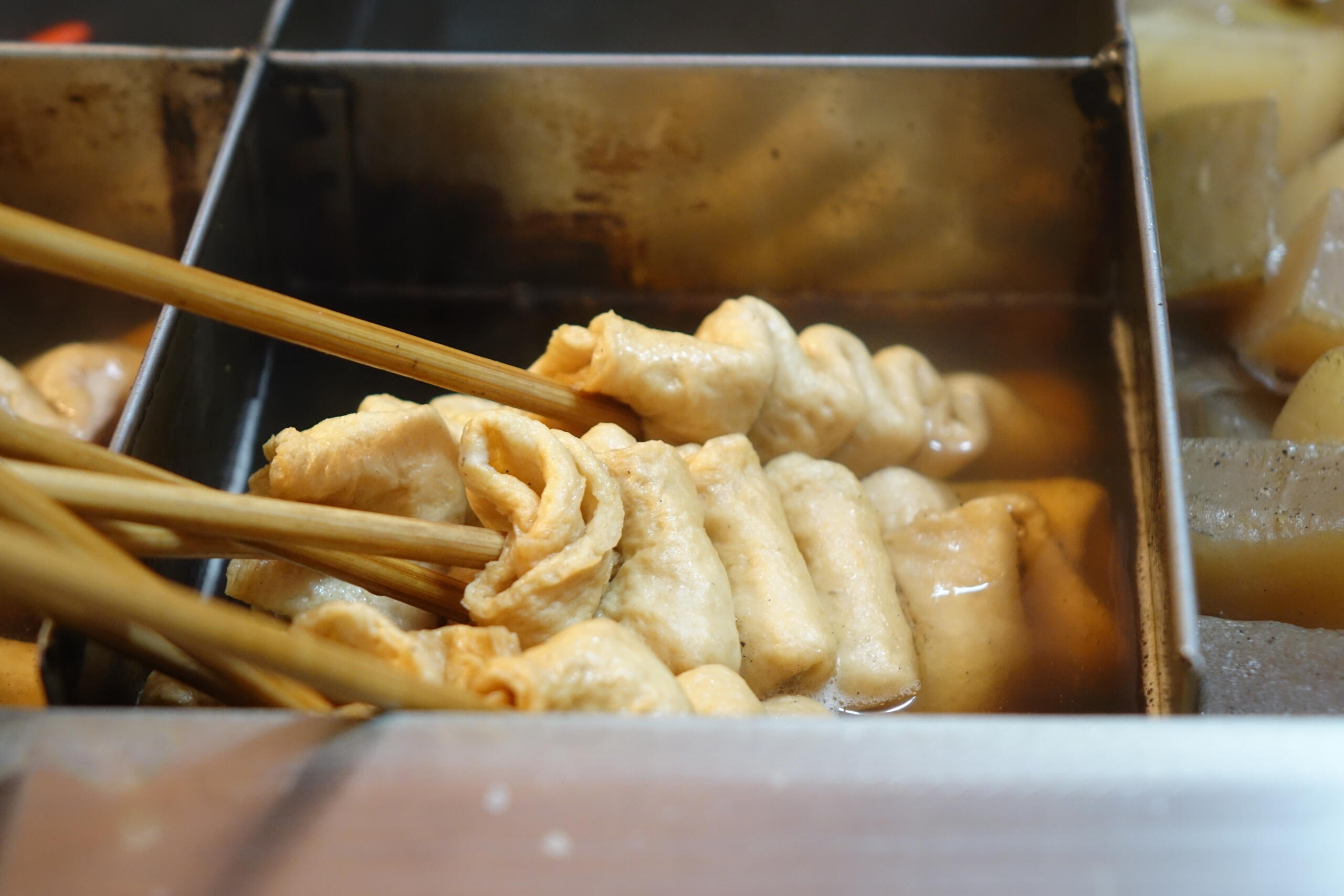
Now, let's speak about the famous fish cakes... Have you thought about trying eomuk?
These South Korean fish cakes are so versatile that they can be boiled, steamed, fried, served in soups, and eaten off skewers. You can even use this ground-up fish paste to make gimbap!
You can get the deep-fried fish cake version called hotbar, but only when it's cold out. Eomuk vendors usually have their own recipes and presentation. And we always recommend that you visit as many food carts as possible to try as many as you can.
Bungeoppang (Fish-shaped Pastry)
If you love warm pastries (who doesn't?) You should definitely try bungeoppang.
This street dessert is shaped like a fish and is made of a crispy pastry filled with red bean paste. This one is the classical version of the dessert; however, you can also find bungeoppang filled with chocolate, custard, or cheese.

This fish-shaped wafer must be on the top food list of all sweet tooth lovers. 5
Dakgangjeong (Sweet Crispy Fried Chicken)
Dakgangjeong is another Korean street food classic you can't miss. Bite-sized pieces of crispy chicken coated in a soy, garlic, sweet and hot sauce. The dish can be sprinkled with sesame seeds, and it's the ideal midnight snack. If you are a Kentucky Fried Chicken lover, undoubtedly, dakgangjeong will be addictive for you.
Mandu (Dumplings)

If you are a dumpling lover, mandu are uniquely Korean. These dumplings can be steamed, boiled, or fried and are typically filled with a mixture of pork, beef, tofu, glass noodles, and vegetables. Originally introduced from China, mandu has evolved as part of Korean home-made meals and street food.
We hope you're not reading this blog on an empty stomach. Definitely one of the best Korean foods.
Tornado Potato (Hoeori Gamja)
Hoeori Gamja is one of the most Instagrammable fun snacks of Korean street food. It is a golden fried spiral-cut potato on a long skewer.
You can usually add cheese powder, chilli, and other sauces to enjoy a crunchy on-the-go snack. Undoubtedly a favorite of young and old alike!
Hoeori Gamja is pretty popular among students and tourists because it is affordable and attractive, and who doesn't like potatoes in any form?

Gyeranppang (Egg Bread)

If you ever visit Korea, Gyeranppang could easily be one of the go-to breakfast options. It is a cute oval-shaped pancake with an egg baked in the center. It's one of the favorites for its fluffy texture and sweet-and-salty flavors, and it can even get creative with cheese, ham, and herbs on top.
If you're looking for a healthy and comforting snack, gyeranppang or egg bread is a must-try. One of the most nutritious options in Korean fast food.
Sundae (Blood Sausage)
Perhaps the name doesn't sound very appealing. Sundae is another popular street food; it is basically a blood sausage stuffed with glass noodles, rice, and steamed cow's or pork intestines. The ingredients are carefully cleaned to prepare the saucage, which is then steamed and sliced. Surprisingly, its flavor is not as intense as you might expect. It is usually enjoyed with chili flakes and can be eaten alongside the tteokbokki sauce!
Sundae is definitely one of those dishes you must try to eat like a true Korean. Western palates have a hard time adjusting their taste buds to this dish. But it is wildly popular among South Korean people.
Jjajangmyeon (Noodles in black bean sauce)
A hot dish that makes frequent appearances in Korean television shows. It consists of a thick brown sauce called chunjang, served over noodles. Chunjang can be sweet, savoury or mild in flavour. For this dish, small pieces of meat, such as pork or beef, are stewed with a handful of vegetables, which are added much later in the cooking.
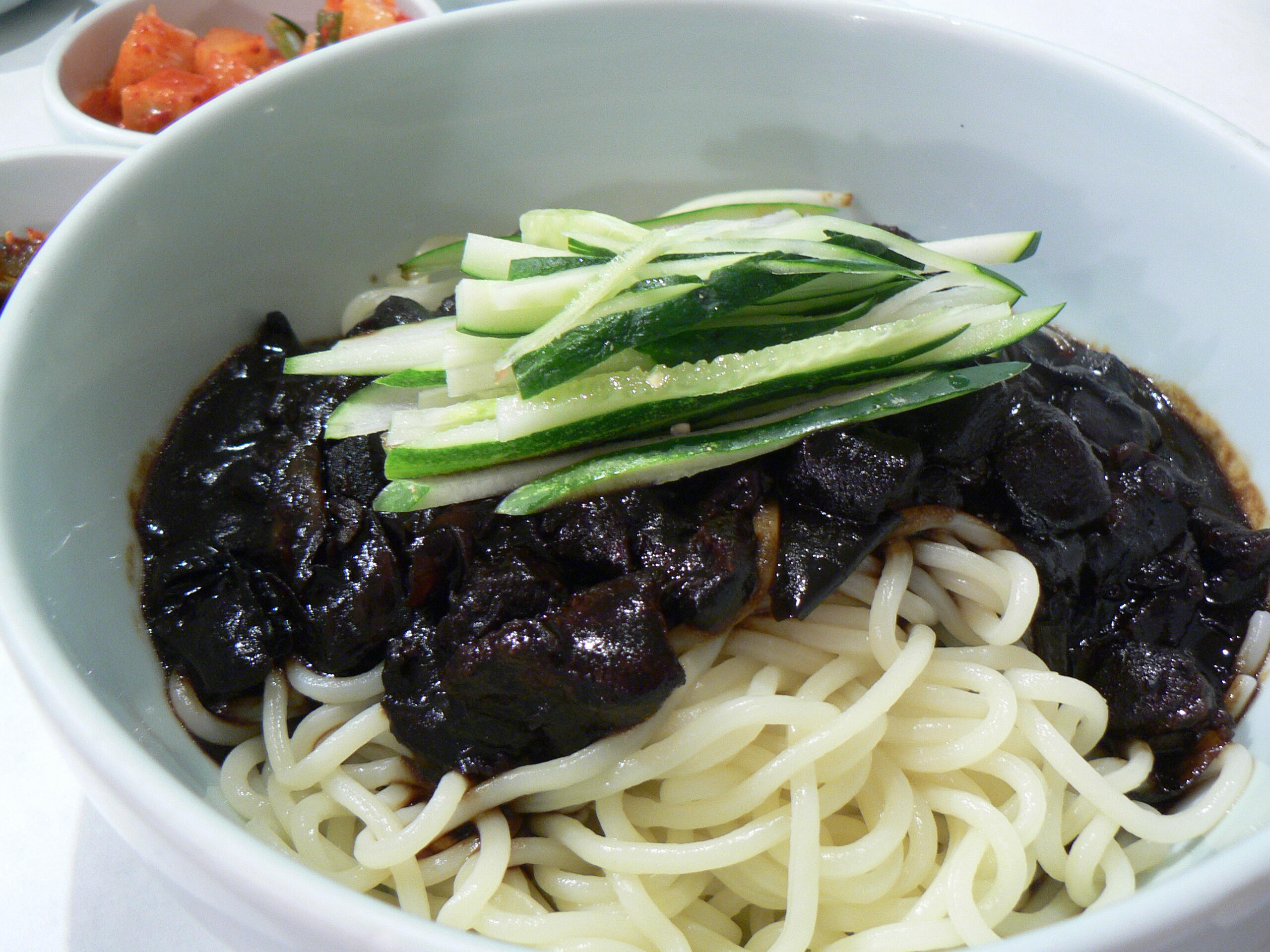
Seolleongtang (Ox bone soup)

Mentioning another very popular soup in Korea, we find the ox bone soup might come the closest to what Westerners are used to eating. Its pretty simple ingredient list makes it easy to prepare and very convenient if you're looking for a quick meal packed with nutrients.
Boil ox bone chunks for hours to extract all the nutrients, and then add salt, pepper, scallions, and garlic, bits of meat, and a few noodles. It's typically served plain so diners can season it to their liking with banchan. 6
Kimchi (Spicy fermented cabbage)
Last but not least, no Korean meal would be complete without kimchi, a food known for its anti-inflammatory properties. This fermented cabbage side dish is probably the most renowned of all Korean banchan. Some Korean people make kimchi with radish, while others prefer using just Napa cabbage.
They may season their kimchi with piquant chilli powder, garlic, spring onion, and ginger. Jeotgal (lit. tangy seafood) is another heavy favourite among kimchi makers.

But did you know that not all kimchi is spicy? If you'd rather sample a milder type, ask for baek-kimchi. 7

Regional Variations in Korean Street Food
As in Canada and around the world, popular Korean food dishes vary by location. For example, in Seoul, the capital, you will mainly indulge yourself in unique flavors and popular snacks, such as the tteokbokki or kimbap, ideal meals for all those who love the capital's nightlife. Moving a bit further south, in Busan, you will discover the city's coastal influence and try eomuk and seafood pancakes.
Now, if you visit Jeonju, known as the food capital of Korea, expect to enjoy more traditional dishes, such as Jeonju bibimbap, rice, seasoned veggies, beef, and yellow mung bean jelly, which you can mix with chili paste for a kick. No matter where you are in the country, yummy Korean food is renowned for its bold flavors and diverse array of dishes. Korean cuisine offers a unique culinary experience!
Tips for Enjoying Korean Street Food
Trying all the Korean street food is undoubtedly an adventure in every sense of the word: from its presentation and aroma to its different textures, we're sure you've seen some of these popular snacks and meals in your favorite K-dramas or Korean animations. However, to get the most out of your experience, here are some tips to help you eat and enjoy like a local.
Now that we've whetted your appetite with Korean street food, continue to be amazed by Korean cuisine and discover the most famous Korean people.
References
- Wikipedia contributors. (2025j, October 23). Korean cuisine. Wikipedia. https://en.wikipedia.org/wiki/Korean_cuisine
- KOREA webzine _ Flavor. (n.d.). https://www.korean-culture.org/eng/webzine/201901/sub08.html
- Wikipedia contributors. (2025d, September 12). Hotteok. Wikipedia. https://en.wikipedia.org/wiki/Hotteok
- Wikipedia contributors. (2025k, October 14). Gimbap. Wikipedia. https://en.wikipedia.org/wiki/Gimbap
- Wikipedia contributors. (2025c, August 18). Bungeo-ppang. Wikipedia. https://en.wikipedia.org/wiki/Bungeo-ppang
- Korean Culture and Information Service (KOCIS). (n.d.). Korean recipes: Ox bone soup, Seolleongtang (설렁탕) : Korea.net : The official website of the Republic of Korea. Copyright(C) 1999-2016 KOCIS. All Rights Reserved. https://www.korea.net/NewsFocus/Culture/view?articleId=130875
- The Editors of Encyclopaedia Britannica. (2025g, October 8). Kimchi | Ingredients & facts. Encyclopedia Britannica. https://www.britannica.com/topic/kimchi

